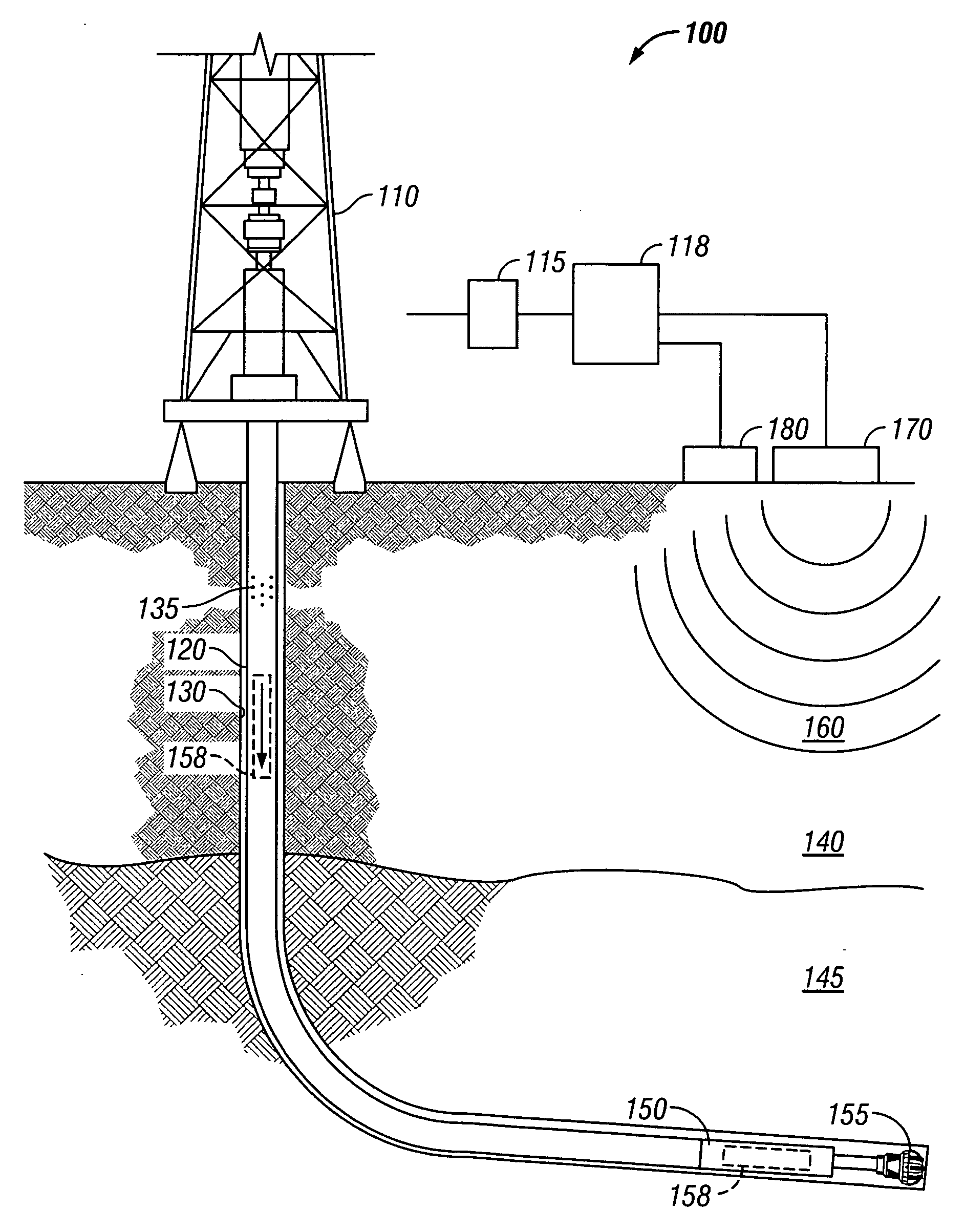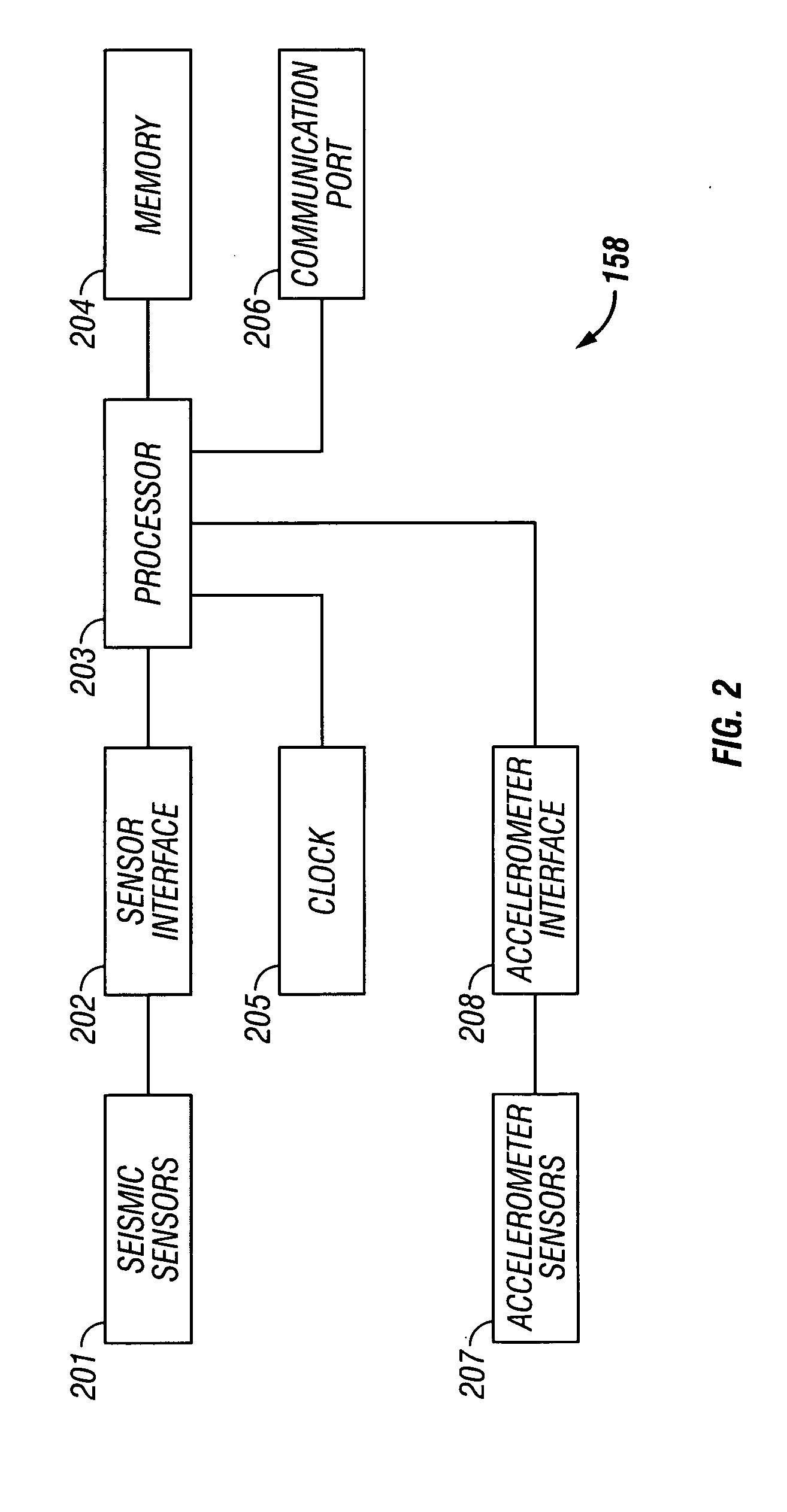Use of pattern recognition in a measurement of formation transit time for seismic checkshots
a technology of pattern recognition and seismic checkshots, applied in the field of geophysical exploration, can solve the problems of poor resolution and depth location, inability to accurately measure the formation transit time of seismic checkshots, and inability to accurately predict the exact speed of sound of these seismic waves
- Summary
- Abstract
- Description
- Claims
- Application Information
AI Technical Summary
Benefits of technology
Problems solved by technology
Method used
Image
Examples
Embodiment Construction
[0019] Recognizing a single seismic event within a noisy environment, like that environment proximate to the well bore while drilling, is difficult by automatic means due to low signal to noise ratio. Surface emitted coded signals consisting of discrete timed events or frequencies are easier to recognize in the downhole conditions even given the losses and distortions due to the transit through the earth formations. Lower fundamental frequencies still retain the source generated recognizable pattern (whether the pattern is predetermined or not), allowing the downhole tool system to deduce the time of arrival of any given point on the pattern. This source generated pattern may be arbitrary or contain information about the time of source (“Source Time”) activation, thus enabling transit time calculation downhole as well as enabling determination of the absolute time of “first break arrival.” This “source time” may be used to synchronize the downhole and uphole (or near surface) clocks...
PUM
 Login to View More
Login to View More Abstract
Description
Claims
Application Information
 Login to View More
Login to View More - R&D
- Intellectual Property
- Life Sciences
- Materials
- Tech Scout
- Unparalleled Data Quality
- Higher Quality Content
- 60% Fewer Hallucinations
Browse by: Latest US Patents, China's latest patents, Technical Efficacy Thesaurus, Application Domain, Technology Topic, Popular Technical Reports.
© 2025 PatSnap. All rights reserved.Legal|Privacy policy|Modern Slavery Act Transparency Statement|Sitemap|About US| Contact US: help@patsnap.com



